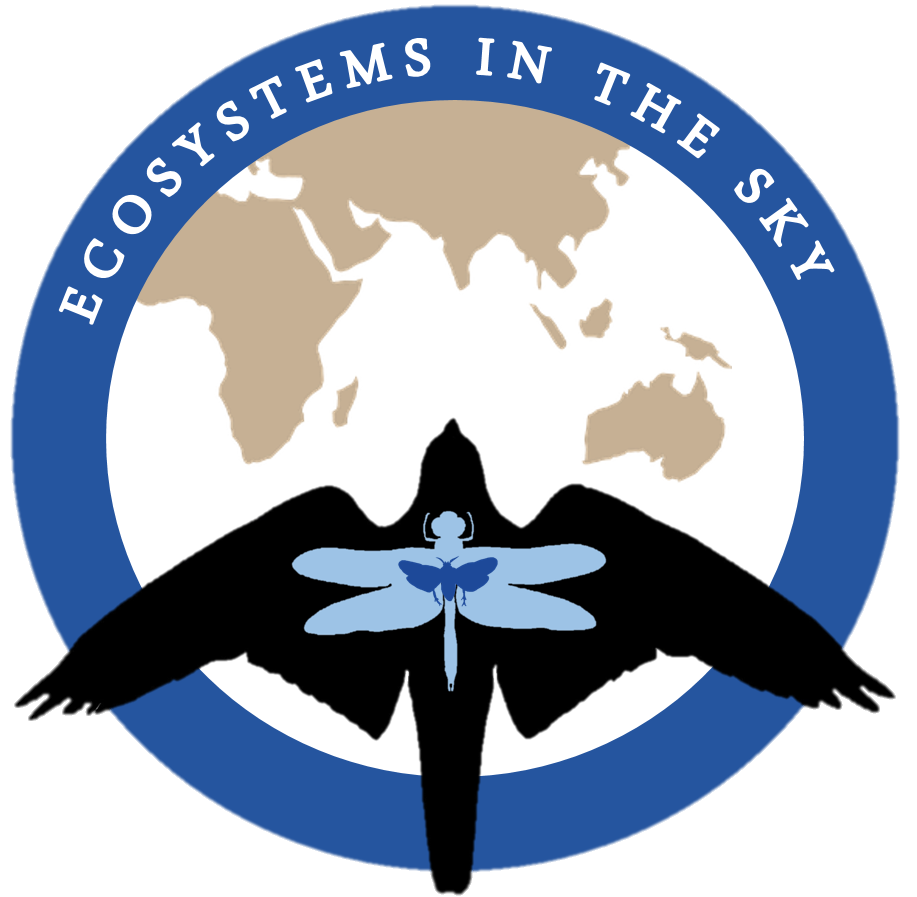
PROJECT UPDATES
Fieldwork on migratory insects in the Maldives
The record-breaking trans-oceanic migration of the globe skimmer dragonfly across the Indian Ocean may be just one part of the incredible insect movement between India and Africa. EcosystemsInTheSky set out to Maldives in autumn 2023 to investigate the presence of additional insect migrants. No great influx of globe skimmers were seen in the first two weeks, which were spent in south Maldives, and local people noted that the winds were strange and different this year. However, a great number of dragonflies had been noted in Malé, the capitol city located 300km north, and there we could capture this video of them just circling an ordinary parking lot. More news on this fieldwork is coming soon!
A small swarm of globe skimmers
Twitter/ X -posts by field assistant Dr Will Hawkes on our discoveries while in the Maldives:
TikTok video by field assistant Dr Will Hawkes explaining one of our most interesting finds from the Maldives: hitchhiking parasitic flies, riding the wings of the migratory dragonflies arriving from India: here
MIGRATORY DRAGONFLY ISOSCAPE
You can help us find out more about where migratory dragonflies come from and where they are going. If you find a dead migrant species, or already have one in your posession, please send it in for analysis.
The Project:
Analysis of stable hydrogen isotope found in wings can tell us about an individual’s origin
Species in focus:
Vagrant emperor
Globe skimmer
Red-veined darter
Lesser emperor
Migrant hawker
NEW PUBLICATIONS
“The genome sequence of the Brown Argus, Aricia agestis”
The Darwin Tree of Life is a project aimed at mapping the genomes for all known species of animals, plants, fungi and protists in Britain and Ireland. This means that a reference library of genes from 70000 species is being created!
In this paper, we present the genome (all of the DNA) of the brown argus, a butterfly that is a member of the ‘blues’ family (although it is not blue, it is brown, as the name implies)
“Increase in protandry over time in a long-distance migratory bird”
In our newest publication we show that males in a migratory bird are arriving earlier and earlier than females (ie protandry is increasing). We suggest that this is due to climate change, as warmer springs have relaxed natural selection against arriving too early, enabling the sex under greater sexual selection (males) to advance their arrival time.
“Unraveling the World’s Longest Non-stop Migration: The Indian Ocean Crossing of the Globe Skimmer Dragonfly”
Read our new paper that investigates whether a globe skimmer dragonfly has what it takes to migrate over the Indian Ocean!
Now one of the most read publications at Frontiers!
“ Saving the great migrations will be one of the most difficult conservation challenges of the 21st century”
/ David S Wilcove
author of “No way home - the decline of the World’s Great Animal Migrations“ (2008)
Amur falcon male. Photo by: Derek Keats (Attribution 2.0 Generic license)


















